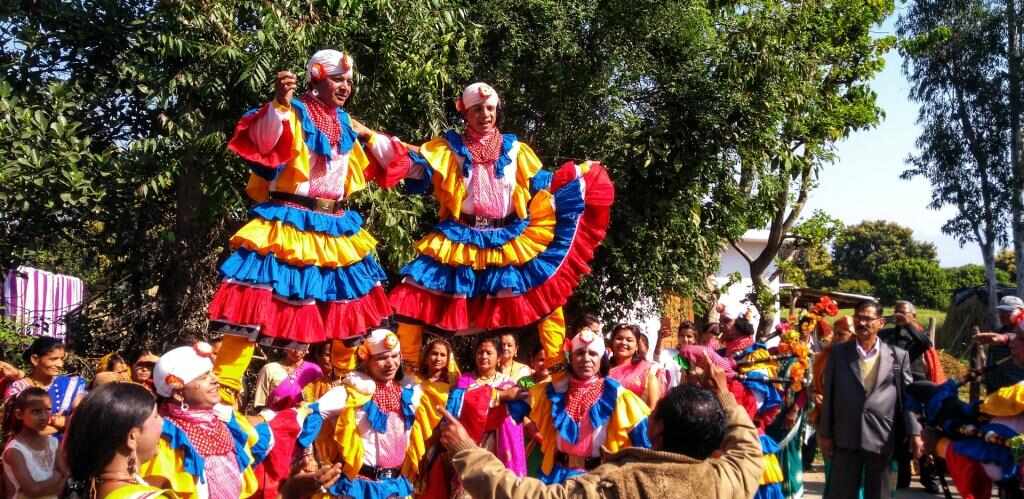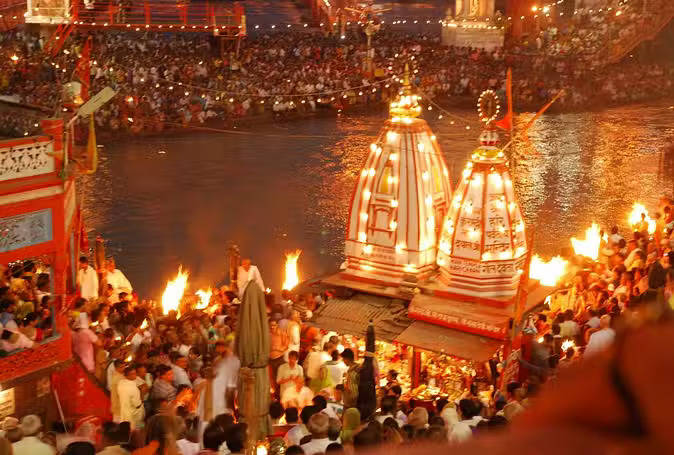Uttarakhand (formerly known as Uttaranchal) was carved out of Uttar Pradesh on 9th November, 2000. Located in Northwest India, Uttarakhand is one of the most beautiful states crossed by the Himalayas. It is bordered by Himachal Pradesh, Tibet, Nepal and Uttar Pradesh.
Uttarakhand is home to the four most sacred Hindu pilgrimages in India, which are known as the Char Dham. These include Kedarnath, the highest of the 12 Jyotirlingas, Badrinath, temple of the Hindu God Vishnu, Gangotri and Yamunotri, which are dedicated to the scared rivers Ganga and Yamuna. For having several Hindu pilgrimage sites and also because of its stunning natural beauty, Uttarakhand is referred to as ‘Devbhoomi’ or abode of the Gods.
Uttarakhand entices tourists from across the world due to its popular travel destinations like Rishikesh, Nainital, Jim Corbett National Park, Valley of Flowers National Park, Mussoorie, Almora, Dehradun (state capital), Haridwar and several other attractions.
Uttarakhand boasts of unique festivals which are celebrated throughout the year. On Uttarakhand Foundation Day 2024, here is a look into some of the most amazing festivals of the state.
Kumbh Mela
Any discussion about festivals of Uttarakhand is incomplete without mentioning Kumbh Mela. This is one of the biggest and the most popular festivals not only of India, but boasts of being one of the largest religious gatherings in the world.
During Kumbh Mela, pilgrims take a dip in the river Ganga with the belief that the holy river will wash off their sins. Kumbh Mela witnesses a crowd of followers, saints, common people, international tourists and visitors, regardless of their caste, creed or gender who take bath in river Ganga, hoping to eliminate the cycle of birth and death.
However, Kumbh Mela is not only restricted to Uttarakhand. This 3-month long festival takes place once in every four years turn by turn in Uttar Pradesh’s Prayagraj (formerly Allahabad), Haridwar in Uttarakhand, Madhya Pradesh’s Ujjain, and Nashik in Maharashtra, i.e., only once in 12 years in any one place. The exact date of the festival is decided as per the Vikrant calendar. The next Kumbh Mela will be held in Prayagraj from 13th January to 26th February 2025.
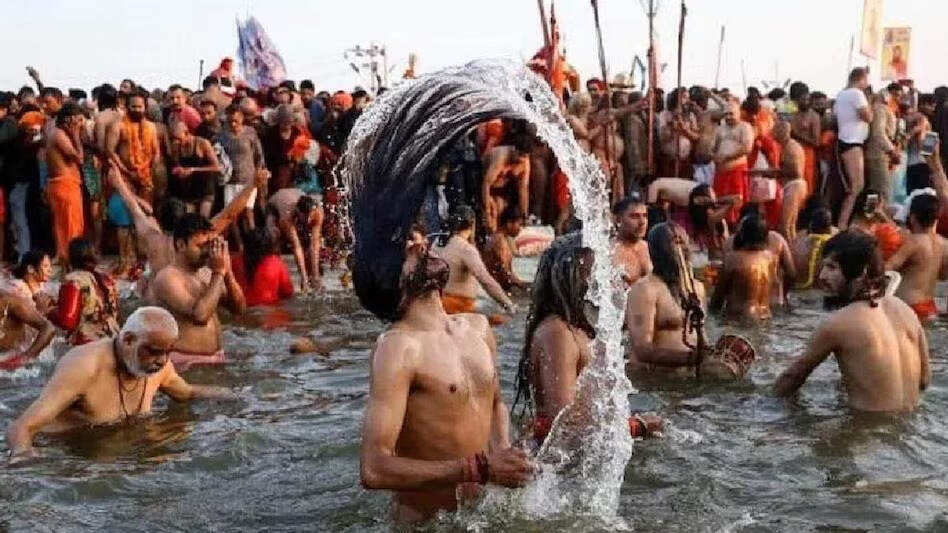
Magh Mela
Magh Mela is a religious fair which has become one of the most popular fairs in the Uttarkashi district in Uttarakhand. It is also a major source of income via tourism for the state. Magh Mela is hosted normally between 14-21 January, as part of which dolis or palanquins carrying the deity, are carried to the Ramlila Ground.
During this fair, devotees from different places come for Ganga Snan (dip in the holy River Ganga) and for shopping. Villagers from remote areas also come to this fair to sell wool and other handmade products of their respective areas.
People from different parts of Uttarakhand display their local produce and handcrafted items for visitors. Since the fair takes place in January, skiing activities also take place during this time frame in the skiing ground prepared in Dayara Bugyal, a popular trekking and camping destination.

Basant Panchami
The festival of Basant Panchami celebrates the onset of Basant or Spring season. One of the significant festivals observed in Uttarakhand, Basant Panchami marks the end of winter, while welcoming the month of Magh which falls in end of January or early February. On the occasion of Basant Panchami, Devi Saraswati, the goddess of knowledge and music is worshipped.
This festival is marked by wearing yellow coloured traditional outfits, while the local people perform Chounphula and Jhumelia dances and fly kites. Sweet rice or kheer is prepared at home as part of the festival.
Apart from Uttarakhand, Goddess Saraswati is worshipped during Basant Panchami in the states of West Bengal, Odisha, Assam and Bihar.
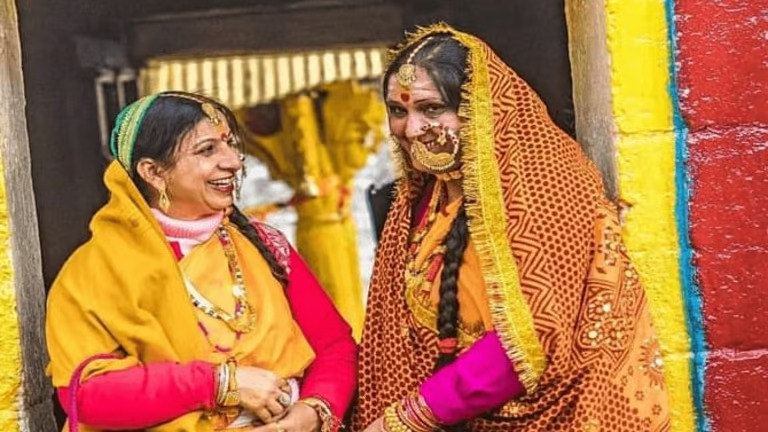
Bhitauli and Harela
Celebrated in the month of Chaitra (March – April), Bhitauli is a festival during which, a married woman’s brother, parents or other relatives visit her and bring with them sweets, fruits and new clothes. A newly married girl receives her first Bhitauli in the month of Baisakh (April-May), after which it is given each year in the month of Chaitra.
Bhitauli revolves around agriculture where women sow seeds in the soil and by the end of the festival they reap the harvest which is called Harela. This allows them to test the quality of their seeds.
Harela means “day of green” and is a Hindu festival celebrated in the Kumaon region of Uttarakhand.
Harela, which is celebrated in the Shravan month (July-August) of Hindu calendar marks the advent of the rainy season and it also commemorates the wedding of Lord Shiva and Parvati. On this day, people make small Dikars (small idols of gods and goddess made of clay) of Gauri, Maheshwar, Ganesha, to worship them. The bullocks are also given rest on this day and the Harela is sent to friends and family. The festival is significant because it provides an opportunity to the cultivator to test the quality of seeds that he has in his stores.
During Bhitauli, the local people start planting seeds in small pots or fields and water them daily. On the day of Harela, the saplings are worshipped and sowed in the fields. Local people celebrate this festival by cleaning and decorating their homes with greenery and flowers. Homemade traditional foods such as Bhatt ki Churkani, Baadi, and Gulgula are a part of the festival feast.
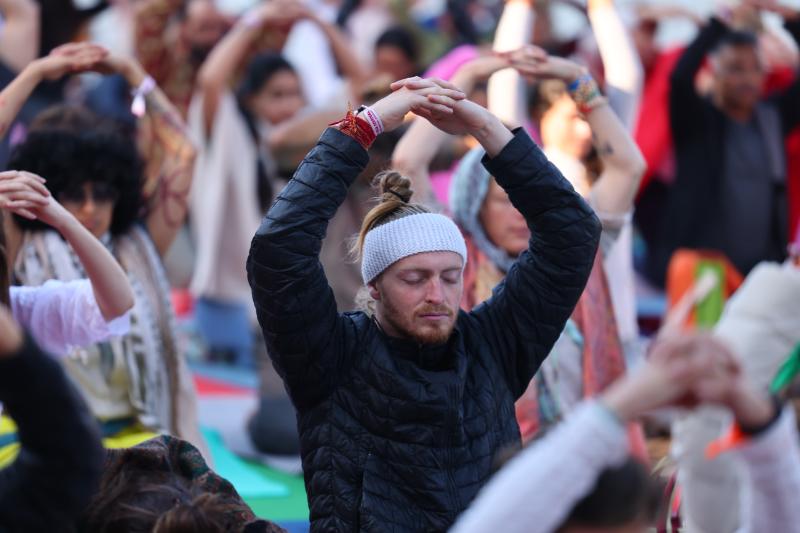
International Yoga Festival Rishikesh
Yoga is a popular activity across the world, which is being heavily promoted by Indian Prime Minister Narendra Modi. Every year, the Yoga Festival Rishikesh is hosted in the city, which started in 1999. This week-long festival is normally organized in the first week of March.
During this festival, yoga enthusiasts can attend yoga classes hosted by world famous yoga teachers and try various kinds of yoga like Kundlini Yoga, Iyengar Yoga, Kriya Yoga, Naad Yoga, Ashtang Vinyasa Yoga, Hath Yoga, Power Yoga, Jivamukti Yoga and Raj Yoga.
Apart from yoga, meditation classes are also held. The International Yoga Festival Rishikesh experiences footfalls from across the world with people from various countries and religions attending it.
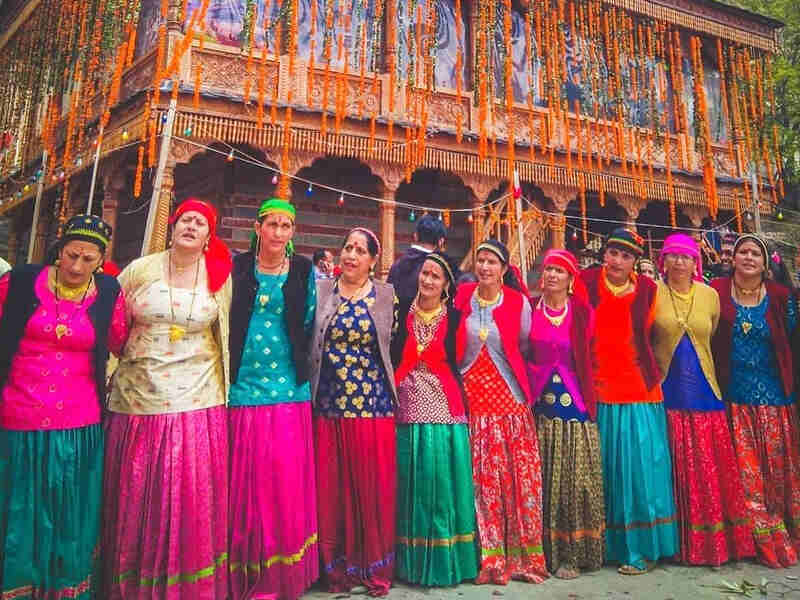
Bissu Mela
Organized in the Chakrata Block of Dehradun in the harvest season during mid-April, Bissu Mela is a fair celebrated by the Jaunsari tribe. The Jaunsari tribe and their festival’s history can be traced back to the Pandavas.
This fair is celebrated for over the period of a week in virtue of a good harvest season in Uttarakhand. Villagers come together to worship ‘Santoora Devi’, which is an incarnation of Goddess Durga. In this fair, the local people dance with folk music wherein men and women wear traditional clothes and indulge in a feast comprising traditional delicacies.
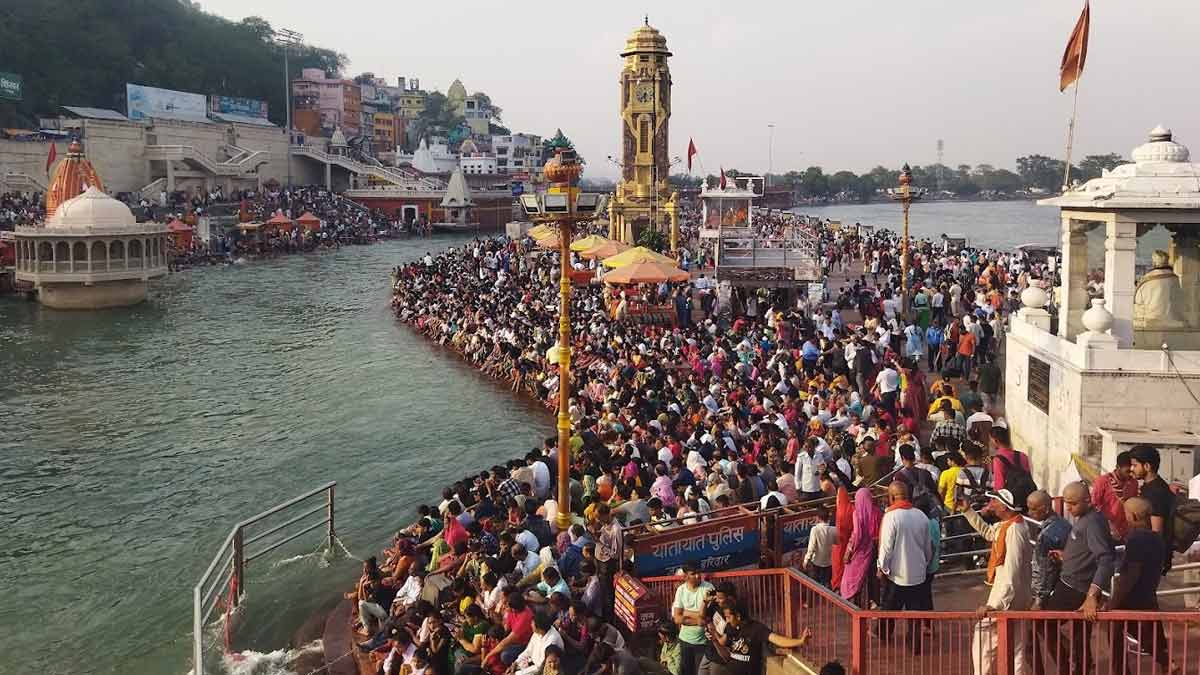
Ganga Dusshera or Dasar Festival
Celebrated in Uttarakhand, Uttar Pradesh, Bihar, and West Bengal Ganga Dusshera or Dasar Festival is observed in the month of Jyestha (May-June) as per the Hindu calendar. The Holy Ganga River is worshipped during the 10-day-long festival. As per Hindu mythology, on this day, the holy River Ganga descended from the heaven to earth.
This festival in Uttarakhand starts on the Amavasya night (new moon) of Hindu calendar and ends on Dashami tithi (10th Day). During Ganga Dusshera, aarti is performed on the banks of the river in the popular pilgrimage destinations of Haridwar and Rishikesh and Uttar Pradesh’s Prayagraj (formerly Allahabad).
The purpose is to cleanse one’s soul by taking bath in the sacred River of Ganga for ten consecutive days. After taking bath, the devotees meditate on the banks of the Ganga River. In the evening earthen lamps are floated in the river along while devotees sing devotional songs.
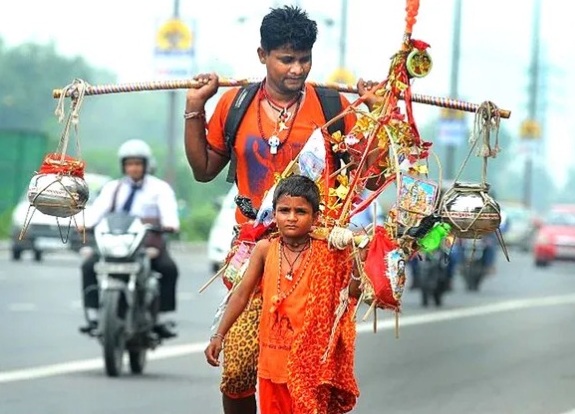
Kanwar Yatra
The onset of the Hindu month of Shravan (July) marks the commencement of the ‘Kanwar Yatra’ sacred pilgrimage journey in Uttarakhand. During the month-long pilgrimage, devotees of Lord Shiva from across India travel to the banks of the River Ganga (cities like Haridwar, Gangotri, Gaumukh, etc) and carry back sacred water from the Holy River to a Shiva temple in pitchers carried on their shoulders using a bamboo pole, known as a Kanwar. Devotees also carry their deity on the Kanwar and travel to the holy river bare feet.
This festival witnesses large camps and gatherings in Haridwar and Gangotri with makeshift accommodations that are constructed across the journey for the Kanwarias to rest. Devotees mostly come from the surrounding states of Delhi, Uttar Pradesh, Haryana, Rajasthan, Punjab, Bihar and some from Jharkhand, Chhattisgarh, Odisha and Madhya Pradesh. Kanwar Yatra is one of the biggest human gatherings in India.
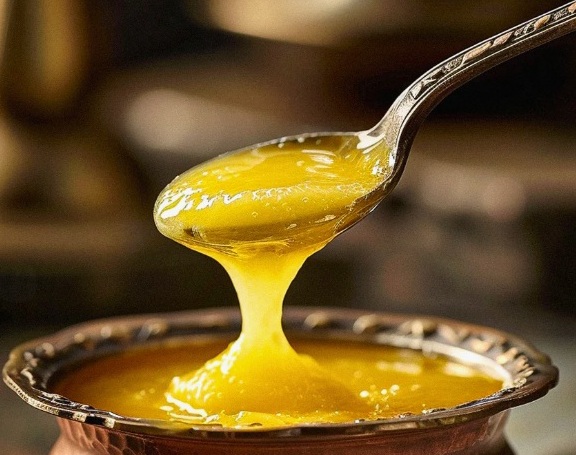
Ghee Sankranti
Celebrated on the first day of the month of Bhado, (usually in August), Ghee Sankranti is a festival of gratitude for agricultural prosperity and the abundance of crops, fruits, vegetables, and milk products. Ghee is considered to be a symbol of purity, prosperity, and health. Ghee Sankranti is also known as Olgia or Ghee Tyar in some regions.
During this festival, local people of Uttarakhand exchange gifts and eat delicious dishes made with ghee on this day. Some of the common gifts are axes, metal calipers, oral harps, and firewood. People also participate in cultural activities such as singing folk songs, dancing folk dances, playing folk instruments, etc. Another custom involves pouring ghee on each other’s foreheads as a gesture of blessing and goodwill. This is especially done by the elders of a family to the youngsters.
